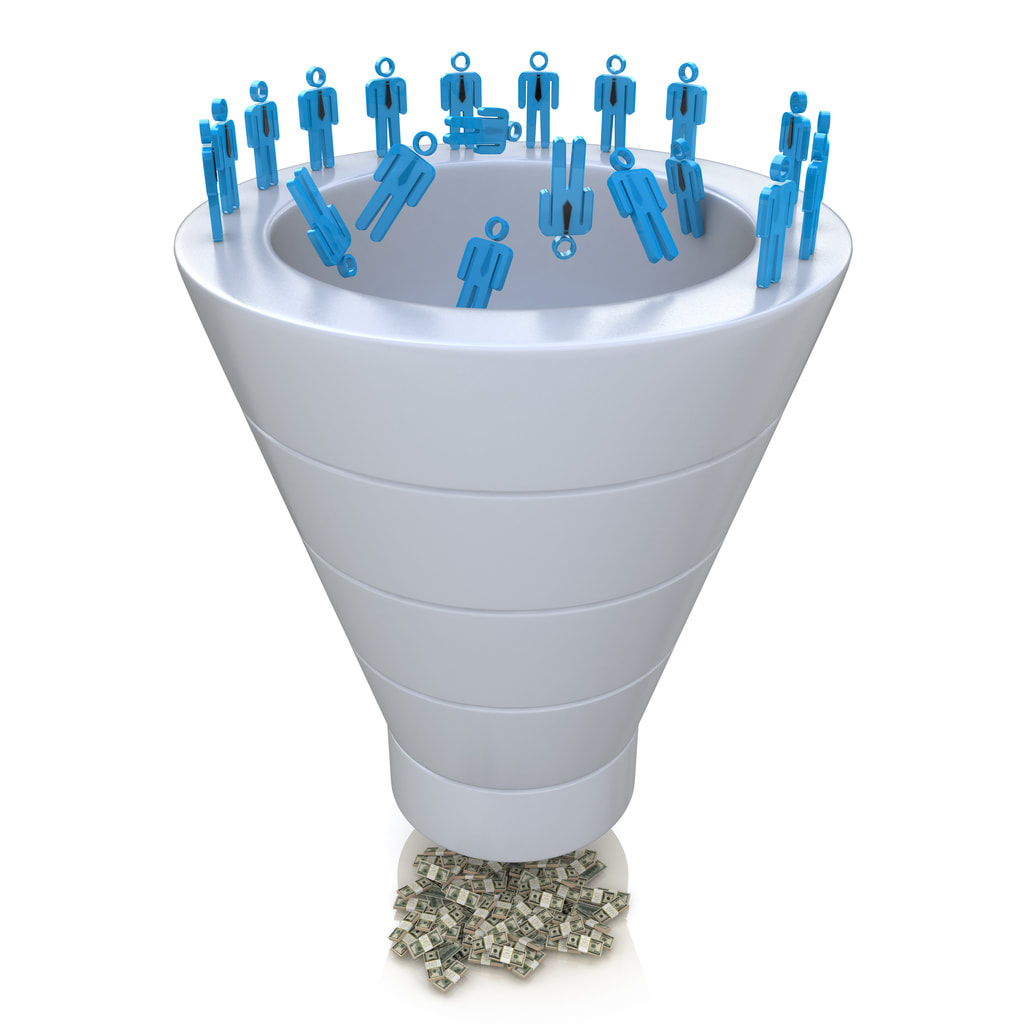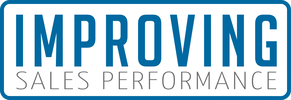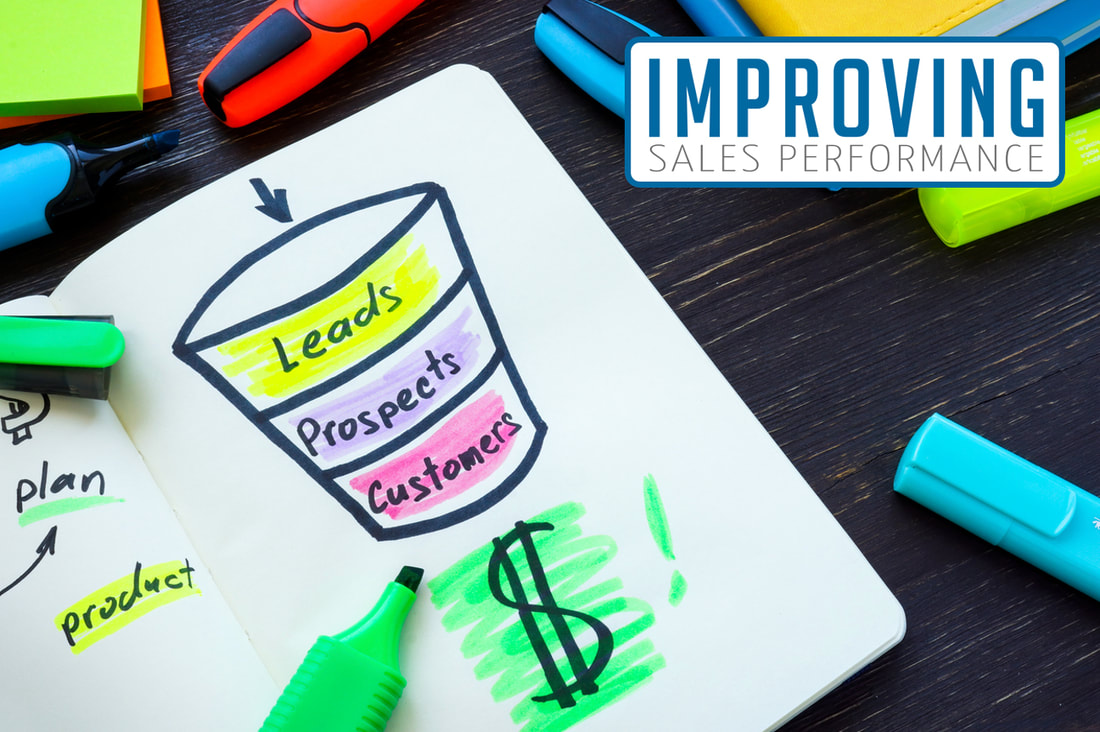|
When some marketing professionals hear the term "sales funnel," it can be a bit of a turn-off. They may think that the company's sales funnel has nothing to do with them; that they're busy managing the brand, while sales reps are doing the unrelated work of closing deals.
The reality is that the sales funnel really encompasses all aspects of a business — especially the sales and marketing teams. Marketing tasks shouldn't just float on the surface of that funnel, inviting leads to come in. Rather, impactful marketing should work with sales to create concrete projections and deliver tangible results. Of course, sales should also collaborate with marketing to provide the information they need to craft the company's messaging. Simply put, sharing truly is caring when it comes to sales and marketing alignment. When both teams buy into a unified approach, then the entire brand will flourish. The key is for each team to have a broader mindset than what would usually be expected. How Marketing Can Operate With a Sales-Oriented Mindset Marketing pros need to be focused on traditional measures of marketing success: numbers, analytics, branding, content engagement, etc. However, the best marketers are also customer advocates. They can put themselves in the shoes of the consumer, and understand their interests, goals, and pain points. This is where your sales team comes into the picture. Sales reps have a direct line of communication with end users and thus possess a uniquely valuable perspective on what truly resonates with customers. When your sales team keeps marketing informed about which messages are most effective for closing deals — and when marketing is open to those insights — then your company's top-of-funnel strategy will become ever stronger, and conversion rates will increase throughout the sales funnel. Avoiding Waste with Sales-Centric Marketing Another key benefit of approaching marketing with a sales-centered mindset is the avoidance of unnecessary waste — in particular, financial waste that affects the company's bottom line. Marketers who approach the top of the funnel with a purely quantity-based mindset may succeed in attracting a lot of leads, but they often don't consider how likely or unlikely those leads are to make a purchase. In contrast, a sales-centric approach can inform top-of-funnel marketing activities, so that even if the number of leads coming into the sales pipeline is slightly reduced, their quality is increased. This will result in a tighter, more focused approach from your sales team — and less wasted effort chasing low-value leads. (At the same time, using even basic targeting tools will help your marketing team focus on high-value marketing leads, which will also help the sales team in the end.) Valuing Your Sales Team's Time and Skills Some marketing teams fall into the trap of approaching the sales funnel with an "if we build it, they will come" mentality. In other words, they believe that if the product is awesome enough, and the company's marketing infrastructure is powerful enough (e.g., a great website, a strong social media presence), customers will buy based on those merits alone — salespeople not required. The reality is, many customers won't even consider buying from a brand unless they're first encouraged to do so by a skilled sales rep. Your company's sales team is full of individuals with a unique talent, and the ability to effectively nurture leads into paying customers. When your marketing team has genuine respect for your sales team (and vice versa), each team will be more willing to set the other up for success. How Sales Can Operate With a Marketing-Oriented Mindset We've talked about how marketing can be more effective when they think in terms of sales — but does it also work the other way around? Will your sales team perform better if they introduce a "marketing mindset" into their process? The simple answer is: Absolutely! When your sales team has a firm grasp of the work marketing does, and how it relates to their success, then they'll be able to put themselves in the best possible position to close deals. Understanding the Nature of Online Research Your sales team needs to understand which type of lead they may encounter in any given transaction. The key here is becoming familiar with your company's marketing materials — on your website, on social media, and so forth. Sometimes a lead will show up ready to buy because of what they've already found within your marketing content; other times, leads are still making their decision, and need clarification on something they've read or seen. When your sales team can anticipate different scenarios based on the various customer journeys that marketing facilitates, they'll be able to fill the gaps in customer needs and close the sale. Considering How Leads Want To Be Contacted Another way that a marketing-oriented mindset can help your sales reps is the matter of contact methods. Some customers like to be contacted via email; others prefer a phone call; still others prefer texting. Those preferences can be recorded and cataloged by marketing software that lets customers decide how they want to be contacted... and wise sales reps will take those preferences into account when reaching out to leads. Valuing Customer-Focused Content While marketing team members must understand the value of touting benefits over features, salespeople must also be aware of and subscribe to this focus. The average customer doesn't care about all the features built into your product; rather, they want to know how your product will benefit them in tangible ways. It can be easy for your sales reps to fall into a pattern of explaining features during customer interactions when they should take a marketing approach and focus on benefits. Make sure they're asking leads the right questions, and then describing how your product can address concerns, solve problems, and fill needs. (Getting quantitative data on which web pages and lead magnets get the highest traffic volume can be a good starting point.) At the end of the day, when your marketing and sales teams are willing to share, and even think like each other to some extent, they'll end up winning together — and your entire organization will benefit. Learn More A healthy relationship between sales and marketing is vital to an organization’s success. Dive deep into this effective strategy in a new book called Sales & Marketing Alignment. If you'd like more insights on how you can improve your sales leadership, contact us. Or sign up for our newsletter for more valuable resources. Moving customers through each stage of the sales funnel is an important function of your sales and marketing teams. Of course, they need to be in alignment with each other if this process is going to be as smooth and seamless as possible. They also need to deploy the right activities at the right time for best results.
What are some of the activities your team should be doing at each stage of the sales funnel? Let's discuss five for each phase: top (awareness), middle (evaluation), and bottom (decision). Top of Funnel Activities 1. Newsletters These are a great way to provide information that leads need to know about their situation. Highlight the benefits that your product or service offers, and how you can make their lives better, or solve a particular problem. 2. Social media posts Social media is an excellent channel for connecting with prospects and increasing brand awareness. Make sure your team is providing a steady stream of relevant content for users who may be unfamiliar with your company. 3. Marketing email sequences Automated email sequencing is a great "set it and forget it" technique that can help move leads from the top of the funnel to the middle stage. Use those templates to provide educational content, and capture data points that measure each lead's level of interest. 4. Invitations Invite top-of-funnel leads to events where they can learn more about your company and your offerings. These events could include on-demand videos, webinars, panel discussions, product demonstrations, and workshops, to name just a few. 5. Thought leadership Building trust is crucial at each stage of the funnel, especially when interacting with leads who are unfamiliar with your brand. When your team develops high-quality educational content that delivers real value to prospects — and even creates an "a-ha moment" for them — then they'll be much more likely to progress to the middle stage of the funnel and evaluate your company further. Middle of Funnel Activities 1. Presentations and webinars Now that your leads are actively evaluating your solutions, it's important to provide them with meatier data to chew on. Presentations like panel discussions, webinars, and workshops are among the many educational opportunities that can help leads understand the value you provide more clearly. Your prospects will also be able to "mentally experience" what it would be like to partner with your brand. 2. Appointments After every presentation, don't forget to include a next step that invites leads to learn more. This often involves a one-on-one appointment with a member of your sales team. 3. Post-presentation outreach Not every single person who attends a presentation will automatically want to schedule an appointment with your team. However, that doesn't necessarily mean they're not interested in learning more or making a purchase with your company. You may just need to follow up with them in the form of emails, texts, and/or phone calls. Sometimes, a gentle "nudge" from a sales professional is all a person needs to progress to the decision stage of the sales funnel. 4. Data-driven outreach One of the most valuable things about digital marketing is the ability to dynamically track activities like email opens and clicks — both at a group and individual level. The resulting performance data can provide a list of middle-of-funnel leads who have, in one way or another, shown interest through their digital actions. With that data in hand, your sales team can reach out to them via email, phone call, or text to further gauge their interest (and hopefully motivate them to take further action). 5. Sales email sequences Sales email sequences at this stage of the funnel should focus on your solutions, as well as case studies and client success stories. This segues nicely into our next funnel stage... Bottom of Funnel Activities 1. Case studies or success stories These are not just helpful for middle funnel leads, but can also help seal the deal for prospects in the decision-making phase of their journey. Use these resources to increase confidence by painting a picture of a common problem, and then describing how your solution created a satisfying outcome. 2. Ambassadors or reference accounts Leads who are on the edge of buying often want one final confidence check before making a purchase. This is where pre-screened customer ambassadors or reference accounts can prove to be an invaluable asset. They can offer an objective take on your solution, and provide that extra assurance to your prospect about the benefits your company provides. (Just make sure your ambassadors are happy with your company and up-to-date on your offerings!) 3. Guarantees Having some form of guarantee built into your offer directly reduces a buyer's risk and increases their confidence. You can structure your guarantee in many different ways, but some of the most common forms include money-back guarantees (the prospect will get a refund if not satisfied with your offering) and outcome-specific guarantees (you promise a positive outcome for the prospect, no matter the cost to your company). Remember that the clearer and simpler your guarantee, the more effective it will be at moving sales forward. 4. Samples, test drives, and trial periods Offering trial runs for your leads is a great way to provide them with a no-risk experience of your product or service and allow them to explore your offering more fully. Of course, this type of strategy requires intentional design as to how it will work, how it will be managed, and how it will help your sales team close more deals. Collaboration among your sales, support, and delivery teams is vital to ensure that trial runs lead to a higher close rate. 5. Ride along This strategy lets bottom-funnel leads experience your solution firsthand through a demo or the eyes of a current customer. This is another excellent way to help them more clearly understand the benefits that your solution can provide. If your sales and marketing teams work together to implement the activities discussed above, at each appropriate stage of the sales funnel, then you'll be in a prime position to achieve increased revenue and a more robust customer pipeline. Learn More A healthy relationship between sales and marketing is vital to an organization’s success. Dive deep into this effective strategy in a new book called Sales & Marketing Alignment. If you'd like more insights on how you can improve your sales leadership, contact us. Or sign up for our newsletter for more valuable resources.  Time is an invaluable resource, and you need to make the most of it at every opportunity. The only thing is that there is no exact method to calculate how fruitful you are with time. That probably explains why 34 percent of salespeople indicate that the effectiveness of their efforts is only minimal. However, measuring sales pipeline velocity can be the first step to increasing your company’s revenue and optimizing your sales process. That means building a more efficient, cohesive sales team and bringing targeted changes to your sales process is possible when you optimize your pipeline velocity rate. Having precious leads sitting in your CRM is not enough. That’s because when leads reach the top of the sales funnel, roadblocks may emerge, preventing the average salesperson from hitting their quota. This happens because prospects tend to move sluggishly for longer than they should and appear to never reach the bottom of the funnel. In part, that explains why optimizing sales pipeline velocity is something you cannot afford to overlook. What Is Sales Pipeline Velocity? Simply, sales pipeline velocity refers to the speed at which your prospects move from the top of the sales funnel to its bottom. Note that the metric applies regardless of whether you lose or win leads. In other words, it is a measurement that helps you understand the speed at which you are making profits. You can also view pipeline velocity as the value of every individual lead over a specific period. As such, a formula is what matters in this case and not just a single parameter. The following are the components of that formula.
The Importance of Pipeline Velocity First, understand that realizing a smooth transition of prospects through all the sales cycle stages is a challenge if you do not have a healthy pipeline. That implies that the slightest change in how you operate can improve sales pipeline velocity and increase your revenue as well. So, if you want to be a successful entrepreneur, you need to monitor your pipeline velocity from time to time. Sales and revenue forecasting are part of the essential aspects of every enterprise. As such, understanding how fast leads move through your pipeline and the value of each can help you improve those numbers. The bottom line here is that pipeline velocity can help you realize higher conversion rates by accurately optimizing each stage of your sales process. What Is the Goal of Sales Pipeline Velocity? It is worth mentioning that pipeline velocity can help your sales teams because its goal is twofold. Indeed, part of the priorities of your sales team is increasing qualified leads and reducing the number of unqualified ones in the pipeline. On the other hand, sales leaders focus on moving deals through the pipeline as fast as possible. In that case, pipeline velocity can help you assess the effectiveness of both goals. Additionally, sales pipeline velocity will prove instrumental when setting realistic sales goals and quotas. That, in turn, allows you to gain insight into your daily returns. Insight Into Improving Pipeline Velocity Monitoring your pipeline velocity regularly allows you to grow your enterprise and help it thrive. This metric helps you discover how to accurately optimize every stage of your sales process to increase conversion rates. Here are a few tips for improving pipeline velocity. 1. Consider Nurturing Your Leads With Value Driven Content Emailing or calling your leads numerous times with high value messages allows you to move them through your sales pipeline. The focus here should be reaching out to leads proactively in a way that creates value and builds trust. Do this by making sure your content touches them through social media channels, and by simply remaining in touch with them to demonstrate that you care, are thinking of them, and that building relationships is important to you and your organization. For instance, you can send your leads a blog post (protip - that can be generated by your marketing team or something your team did not write but is valuable). Include a message like, "After coming across this article, I thought you would find it useful." By doing so, you are nurturing your leads with value versus trying to nurture them constantly with sales focused messages. The intention, in this case, is to be a resource that understands your leads, what is important to them, and what will provide them value versus a constant buy now drumbeat. Once your prospects discover that your primary objective is providing value, they will be more receptive to investing more and more of their time to learn about you, your company, and your offers, ultimately unsticking leads in your sales funnel and increasing your sales pipelines’ velocity. 2. Streamline Your Sales and Marketing Departments Aligning sales and marketing plays a significant role in optimizing pipeline velocity. That is the case because if your marketing unit sends unqualified and half-baked leads to your sales department, your sales pipeline will be clogged and slow. As such, improving communication between the two departments can improve the lead qualification process. Ultimately, that will increase the speed of moving leads through your sales pipeline. 3. Prioritize Qualified Leads Indeed, giving every possible lead a chance is advisable, but it may not be practical if you have a large population of leads. Plus, not all leads are created equal. Leads will be in different stages of the buyer's journey. Treating them all the same is ineffective and inefficient. To increase pipeline velocity think about:
Conclusion Prioritizing sales velocity is critical since a full pipeline does not necessarily mean you will realize a desirable outcome. Measuring your pipeline velocity regularly and tracing anything that may affect it is paramount in this case. Identifying your ideal company profiles and personas allows you to target prospects with greater chances of converting to buyers. So, you need to remain creative. And working with other units within your entity is not an option in this case. Doing so supports your sales cycles, which makes them more efficient. Also, remember that high-quality leads are an indispensable factor when it comes to speeding up your conversions. You will only find success once you identify what makes your sales velocity spike. If you'd like more insights on how you can improve your sales leadership, contact us. Or sign up for our newsletter for more valuable resources.  Too often, the concepts of sales funnel and marketing funnel are used interchangeably. The truth, though, is much more complex than that. Each are unique concepts. However, both also have to be integrated with each other for a truly successful sales and marketing operation. That doesn't always happen. We've often worked with clients who have had to close a gap between marketing and sales. Or, they treat the two departments as identical. So, in this post, we'll explain the differences and unique aspects of sales and marketing funnels. And we'll dig into how to make sure both work together for maximum sales and revenue performance. Just the Basics: The Marketing Funnel The marketing funnel drives audiences from the first time they become aware of your brand. They are pushed through whatever process or system marketing has developed to prepare and prime these leads for a transfer to sales. This involves all the steps and stages from bringing the lead into your CRM until they are ready to consider purchasing your product or service. Within that basic definition, the marketing funnel usually includes a few crucial steps as the audience narrows down from your entire potential customer base to marketing and sales-qualified leads:
Just the Basics: The Sales Funnel The sales funnel takes sales-ready leads in the CRM, and drives towards a customer conversion (i.e. a sales transaction). That includes a few important steps to narrow down the audience over time:
Where Sales and Marketing Funnels Intersect Based on the unique processes and differences between marketing and sales funnels, it's tempting to keep the two separate. Unfortunately, that can cause some significant issues. Bridging the gap between marketing and sales is absolutely necessary for a consistent, integrated customer experience. That's especially true because, as clearly distinct as the definitions for each might be, they also clearly intersect. In fact, the bottom of the marketing funnel is typically synonymous with the top of the sales funnel. Marketing often ends with lead generation. But this should not be the case. These leads immediately need to be nurtured, starting with the first email they receive to thank them for their contact information. Interest naturally flows into the more conversion-oriented process. In turn, the sales team looks to engage these leads when they either raise their hand or demonstrate activities that indicate they are primed and ready to interact with the sales team. While the emphasis might be different, it pays to think of the marketing and sales funnels as an integrated whole. They both benefit from one another to maximize opportunity. The whole, in this case, truly does become bigger than the sum of its parts. 5 Opportunities To Integrate Your Sales and Marketing Funnels Fortunately, once the marketing and sales funnels are viewed as a larger whole, integration possibilities become more visible. These five opportunities are especially easy to implement as you look to build a better customer journey for your audience. 1. Sales Insights for Marketing Strategy What does your sales team know about prospects as they move through the funnel? What types of prospects are most likely to convert to customers? Marketing can use this information to better target its efforts, from different demographic targeting to the channels chosen for promotion. 2. Lead Generation and Nurturing Overlaps The traditional marketing funnel ends with lead generation. Conversely, the traditional sales funnel begins with lead nurturing. In reality, though, the two concepts are almost necessarily connected. For audiences, they're likely seen as a single process. Thus, a mutual planning effort to make sure that any lead generation messaging and channel strategy matches with its lead nurturing equivalent is vital for a more consistent, successful strategy. For example, sales teams can call prospects that might not be hand-raised leads yet, introducing themselves and setting the stage for later nurturing efforts. 3. Marketing Content To Improve Sales Efforts The job of the marketing team is not necessarily done when a new lead is generated. Lead nurturing, and even the pitching process, can often benefit from additional resources that marketing can provide to support the velocity of leads moving into and through the sales funnel. For example, blog posts, short videos, or even private LinkedIn groups can all help sales in their efforts to convert new customers. 4. Integrated Messaging Throughout Both Sales and Marketing Integration is the name of the game. And that's especially true for messaging throughout both funnels. Experienced marketers already know that the language and selling points of awareness-based ads have to match up with landing pages, conversion messaging, and more to truly make an audience impact. It's only natural to conclude, then, that this consistency can't stop at the marketing-sales hand-off. The more one core message drives the strategy from awareness to customer conversion, the more convincing that message will become. 5. Comprehensive, Action-Based Insights Finally, sharing analytics and reports can be a significant boon to both marketing and sales in improving their efforts. Insights from sales can help marketing adjust their efforts, while marketing insights can provide a crucial background for sales to optimize theirs. Knowing whether a lead came from social media or a Google search can help to optimize the sales pitch, and vice versa. In short, the natural gap between marketing and sales needs to be as non-obvious as possible for audiences. That's only possible with a direct integration between marketing and sales funnels, all working towards the shared goal of optimizing customer conversions and revenue. If you'd like more insights on how you can improve your sales leadership, contact us. Or sign up for our newsletter for more valuable resources. How would you respond if someone asked you: "What's the main job of a sales manager?" Would you talk about pushing your team to meet quotas? Improving productivity metrics? Driving better performance?
Granted, when we're talking about any position in sales we can't discount the importance of the bottom line. But there's a right way and a wrong way to achieve the results you desire. The right way is to bring out the best in your team. That means supporting each individual member, mentoring him or her, and (at the same time) building a certain level of predictability into your forecasting model. Use KPIs to Build Visibility into Your Sales Funnel If you really want to drive team performance as a sales manager and motivate your individual employees to give their best work, then creating more visibility into the sales funnel should be one of your top priorities. The truth is, sales reps thrive within clear boundaries. When you and your team know which Key Performance Indicators (KPI) are most important to sustained, lasting success — and why they're so important — then everyone can work together to meet the same goals. That's one critical way you can support your team. To paraphrase Tom Petty: You don't want your people to be "out in the great wide open," sales reps without a clue. So now the question becomes: Which KPIs should you focus on? There are a ton of crucial metrics in the world of sales, but let's narrow our discussion down to three big ones:
Let's take these one at a time, and see why they're so important to individual and team performance. 1. Sales Funnel Populations It goes without saying that your organization needs to have a sales funnel with clearly defined stages. After all, your "sales pipeline" becomes much more predictable within such a structured framework. If it's predictable, it's measurable. And if it's measurable, it's improvable. Once you have your sales funnel stages clearly defined (and your sales and marketing departments on the same page), you need to determine three things.
Why are these sales population KPIs so important? For one thing, they're great markers for the overall "health" of your sales funnel. If you see increasing populations, then you can expect revenue growth. If you notice decreasing populations, then you should brace yourself for revenue contraction in the near future. These metrics also provide actionable insights. For instance, they can help your finance team forecast for future demand. They can shed light on which activities are driving growth, and which ones are ineffective. Moreover, they can provide a wonderful point of reference to which you, as sales manager, can align your teams for more stable, quantifiable growth. 2. Conversion Rates We're specifically talking about conversion rates between funnel stages here. There are two key elements in play: the amount of time it takes to move leads from one stage to another, and the quantity of leads that make the conversion. What are good benchmarks for your company? It really depends on your specific business and industry. However, if your percentage of leads moving from the evaluation stage (middle of funnel) to the decision stage (bottom of funnel) is low, or if it's taking those leads a long time to convert, then you'll need to make some adjustments. Why are these two aspects of your intra-funnel conversion rate so important? Basically, for three reasons.
3. Close Rates Finally, it's vital to understand your team's average close rate (aka "quote to close ratio," "lead-to-customer conversion rate," etc.) — both as a whole, and for each individual member. Not only does the close rate help to calculate ROI, but it also provides a baseline from which to manage your sales team. Why are close rates so important for sales managers? Realistically, not everyone on your team is going to be a "sales superstar." But knowing the average close rate for your team can inform your expectations for new team members. In addition, knowing the close rates for individual members can provide a great starting point for your coaching/feedback sessions. This knowledge will also act as an early warning sign if someone needs extra support (for example, if a high performer's rate starts to drop month over month). Your close rates can help you to inject a heavy dose of predictability and transparency into your sales process. They can help you set lofty but reasonable goals for each sales rep, incentivize improved performance, and forecast growth. Leveraging KPIs for Sustained Success There you have it: three important KPIs that every sales manager must use! If you take away one key point from the above information, let it be this: Use your KPIs to create visibility, predictability, and accountability for your sales team — and yourself. When your team members have clear, actionable direction and specific goals to shoot for, they'll not only be more productive — they'll be happier at their job. They'll be able to individually improve themselves. At the same time, you'll be in a better position to mentor and support them on a one-on-one basis. Sales KPIs, when used properly, can be a dashboard for performance, both in terms of revenue and human capital. That's their true power. Don't take it for granted! Of course, there's a lot more to the world of sales management than the three metrics discussed above. If you'd like to chew on some more practical SMB insights and advice, sign up for our newsletter; contact our team; or check out our website for valuable resources and webinars. We'd be happy to help you grow your business, one KPI at a time. |
Meet Me
Archives
April 2024
Categories
All
|
|
We are headquartered in Colorado with domestic and international teammates and clients. Please use the contact form on this page to inquire about any of our books, podcasts appearances, speaking engagements and workshops, any of our offerings, or simply to connect.
|
© Improving Sales Performance. All Rights Reserved.





 RSS Feed
RSS Feed
